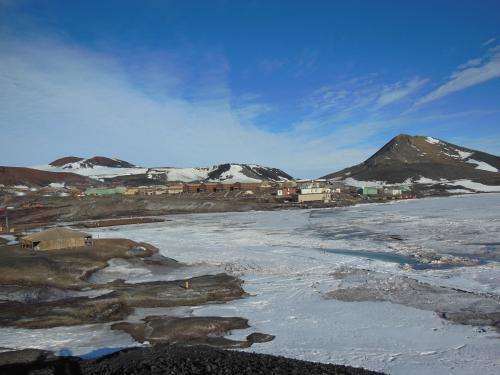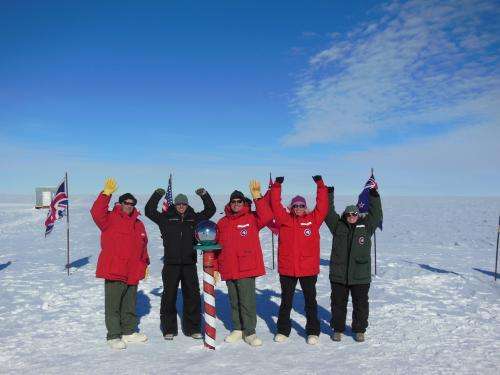Change of venue for NASA's IceBridge Antarctic operations

This fall, NASA's Operation IceBridge will base its annual Antarctic campaign out of National Science Foundation's McMurdo Station, a change from the mission's previous four campaigns that were based in Punta Arenas, Chile. By switching bases of operations, IceBridge will be able to expand its reach by measuring parts of Antarctica previously unavailable to the mission.
"Antarctica is a big place and there are many science targets for us to hit," said Tom Wagner, cryosphere program scientist at NASA headquarters, Washington. This change comes after nearly a year of planning and collaboration between NASA and the National Science Foundation or NSF, to ensure that the station could support IceBridge's personnel, equipment and aircraft requirements.
NSF oversees all U.S.-based scientific expeditions in Antarctica and the U.S. Antarctic Program and Antarctic Service Contract manage operations at McMurdo Station. Because of this, IceBridge planners worked closely with NSF, U.S. Antarctic Program and Antarctic Service Contract personnel to arrange the upcoming campaign. "It is fantastic to see how NSF, ASC, the Air National Guard and NASA have worked together to make this happen," said Michael Studinger, IceBridge's project scientist at NASA's Goddard Space Flight Center in Greenbelt, Md. "The NASA P-3 adds tremendous capabilities to the existing suite of research aircraft that have been used for science data collection over Antarctica."
"The initial challenge was trying to comprehend and identify all of the requirements, constraints and factors of operating science instruments and a wheeled aircraft in a complex and remote environment," said Christy Hansen, IceBridge's project manager at NASA Goddard. "We've been working on this in the background during our last two campaigns."

Late in 2012, NASA representatives traveled to Antarctica to document available resources at McMurdo Station, meet with station personnel and get a better understanding of NSF's regulations. The representatives also verified availability of housing, food and transportation. They checked to ensure IceBridge could operate the mission's aircraft, instruments and equipment without placing an undue burden on NSF or other scientific operations there.
After returning from Antarctica, IceBridge mission planners, instrument teams and the aircraft office at NASA's Wallops Flight Facility in Virginia continued working with NSF to document the mission's requirements. This included working out an accurate headcount for scientists, instrument operators and flight crew and making sure that there would be enough fuel and storage space for the P-3 and the equipment needed to maintain it. Because McMurdo is a remote location the team needs to secure spare parts for any necessary repairs.
While this planning work was taking place, aircraft technicians at Wallops were upgrading the P-3 aircraft so it would meet NSF's requirements and be optimized for flying in Antarctica. Among the upgrades are new flight management and synthetic vision systems and updated satellite communication hardware. "The new flight management and synthetic vision systems will provide the P-3 the ability to perform GPS approaches into airports worldwide and improve reduce visibility landing capabilities," said Mike Cropper, aircraft operations manager at NASA Wallops.
In late October 2013, IceBridge will start survey flights out of McMurdo with the P-3. Flying out of Punta Arenas, Chile, allowed IceBridge researchers to measure portions of West Antarctica and the Antarctic Peninsula. However, there is less information on areas like the Ross Ice Shelf and portions of East Antarctica. "The Ross Ice Shelf is the size of France and poorly understood," Wagner said.
Having better data on these areas would improve knowledge of how the ice shelf interacts with nearby ice streams and what is happening to the continent's ice mass balance as a whole. "Operating the P-3 from McMurdo has the potential to turn into a real game changer for airborne science in Antarctica and will create many new opportunities for science data collection," said Studinger. "It will now be possible to collect data over areas that have been difficult and costly to reach."
More information: www.nasa.gov/icebridge
Provided by NASA's Goddard Space Flight Center




















